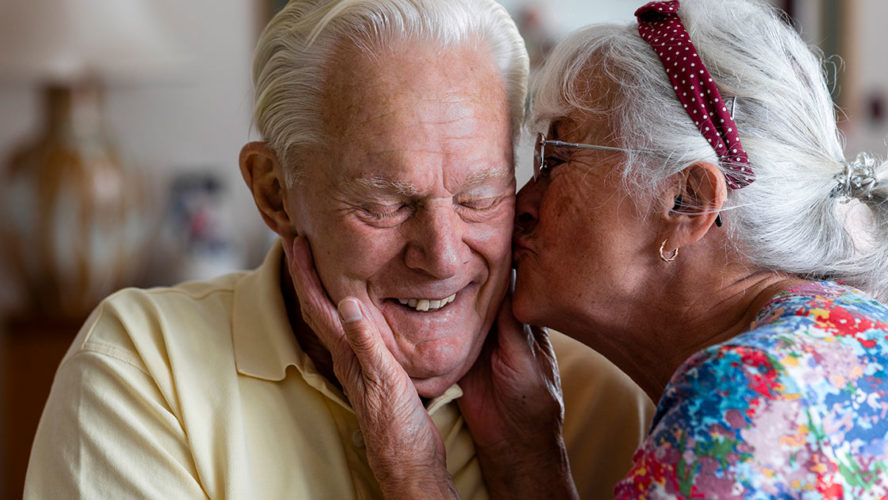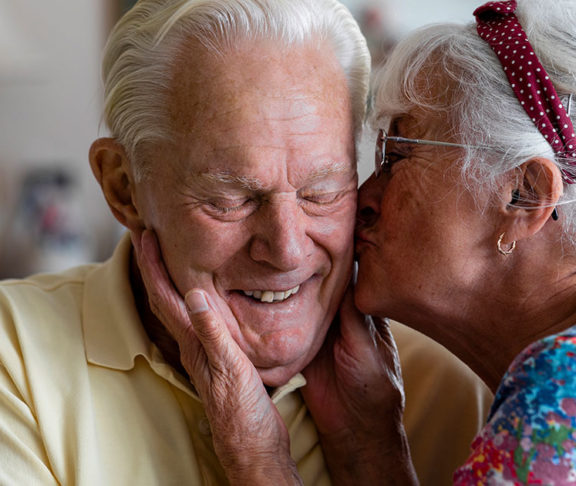There’s a reason why care for people with progressive neurodegenerative diseases costs so much — being a caregiver is hard work.
According to the National Conference of State Legislatures, the cost of providing care for those with dementia, including Alzheimer’s, amounted to $271 billion in 2021. The NCSL estimates there are 48 million people who are considered caregivers to adults, and nearly half of those people offer care to someone with dementia.
Teepa Snow is an advocate for those caregivers and the individuals with Alzheimer’s for whom they are caring. Through her initiative, Positive Approach to Care (PAC), she and more than 50 volunteers — some of whom are living with dementia — are working to create a more kind, accepting, and engaging culture around and within Alzheimer’s caregiving.
Battling stigmas
Snow noted that while she has had family members with dementia, what ultimately motivates her in her mission is a desire to spread kindness and respect toward this patient population.
“What drives me is the way people treat individuals who have brain change, as though they were no longer present,” Snow said. “For me, that’s not the way a human being should be interacted with. It’s potent to watch interactions where a carer is not caring.”
In popular culture, an Alzheimer’s diagnosis is commonly perceived as devastating, and there’s a wide awareness that the disease exists, but these diagnoses can also carry stigma and misconceptions.
“Once someone hears that word — dementia —people will say things like, ‘Well, is she in the violent stage yet?’ It’s like, ‘Well, I don’t know. Have you really ticked her off?’” Snow said. “There’s still so much that’s not okay. I think we have more people who are aware that Alzheimer’s is out there, but I think there’s still such huge misunderstanding, and we have a long way to go.”
Caregiver self-care
For those who have just started caring for someone with Alzheimer’s, Snow recommends taking a curious, not judgmental, approach to the patient’s behavioral changes.
“As your individual is changing, recognize there are things they’ll start to do because they can’t do the other thing,” Snow advised.
Always seek out the things you still love about the person you’re caring for, and if you can’t identify one of those things, it’s a clear sign you’re burned out, Snow explained. If that’s the case, find, build, and lean on your support system.
“Not liking someone makes the job even harder, and it will exhaust you because you don’t have any moments of pleasure in your day. So, we’ve got to get you recharged,” Snow said. “This is a 24/7 job and nobody can do it 24/7.”
Hope for the future
Snow has hope for creating a more loving dementia care culture, as well as for advancements in Alzheimer’s treatment and management itself. She referenced the growing use of technology for social engagement and exercise such as dancing, as well as the emergence of complementary health approaches like animal, music, and cooking therapy. The goal of these therapies, she noted, is to reduce the amount of damage to the brain for as long as possible, until there is potentially a cure for Alzheimer’s disease one day.
Regardless, human connection is invaluable, Snow noted. Although some researchers are experimenting with putting the so-called love hormone, oxytocin, in a pill to help slow cognitive loss (a recent study suggested potential promise for the method in mice), no pill will ever be a replacement for real-life human engagement, she argued.
Snow sees proof of that notion in the people she works with. When caregivers stop to engage with their loved ones and use the approaches she and her colleagues suggest through PAC, they often have a-ha moments that, for Snow, make the job worthwhile.
“When people come back and say, ‘Oh, I tried it and it worked,’ for me, that’s the icing on the cake,” she said.

